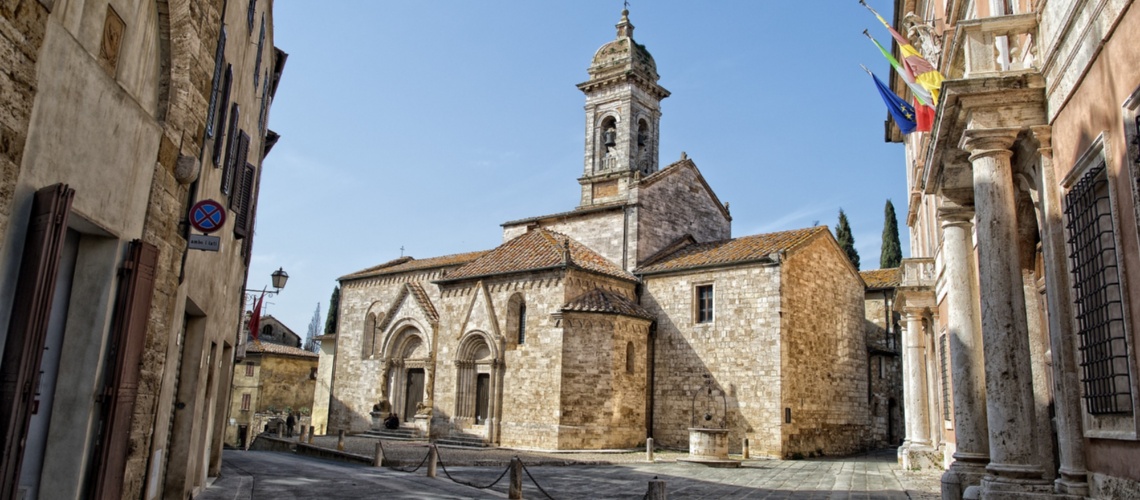In 1155 the most powerful man of the age, Barbarossa, reached the walled hilltop town of San Quirico, with the intention of being crowned Emperor. Frederick I Hohenstaufen, known as Barbarossa, was III Duke of Swabia, King of Germany, King of Italy, and hailed as the rightful sovereign of the Holy Roman Empire: on this last title, however, he had to win to assent of the Church of Rome. The meeting between Barbarossa and a delegation of cardinals sent by Pope Adrian IV (born Nicholas Breakspear) resulted in an agreement which entailed Barbarossa capturing and sending Arnold of Brescia, the Patarine religious reformer accused of heresy, to Rome; thus, Arnold was promptly escorted there by Frederick's troops. This cleared his way towards the Imperial throne, and he duly marched towards Rome, where he was crowned in St Peter's Basilica on 18 June 1155, around which time Arnold was tried and burned, his ashes then being scattered in the Tiber. From that day forth, precisely in order to commemorate the auspicious events that happened there, Emperor Barbarossa resolved to elevate San Quirico and its territories to a seat of the Imperial Vicariate, a political-administrative role which was then maintained by the Republic of Siena and only ceased with the downfall of this latter power.
For San Quirico d'Orcia, the coming of Frederick Barbarossa - 'after a long and hard ride', in his words - and everything that relates to him represents the most important episode in the town's millenium-and-more of history; of history in general it is a great page, worthy of remembrance. And so from 1962, on the basis of the calculations of Professor Orfeo Sorbellini, the third weekend of June is treated as an anniversary to celebrate the story of Frederick I of Hohenstaufen: the Festa del Barbarossa. The historical centre has been redivided into its four original quarters, bearing their original names: Borgo (white and black), Canneti (white and blue), Castello (white and red), and Prato (white and green). This festival has become the most significant in the daily lives of the citizens of San Quirico, which it embroils in a wave of passion. Put on by the people, it has revived the customs of an era long gone. The protagonists are brought to life with actors playing Barbarossa and the cardinals, the civil and religious authorities of medieval San Quirico; the nobles, the commoners and the soldiers. Paralleling the past, the life of the town is lived all year round in its four districts, which turn out for the Festa del Barbarossa for spectacular contests between the arcieri (archers) and alfieri (standard-bearers) for the prize of the Brocche dell'Imperatore (the Emperor's jugs).
Source: comunesanquirico.it






